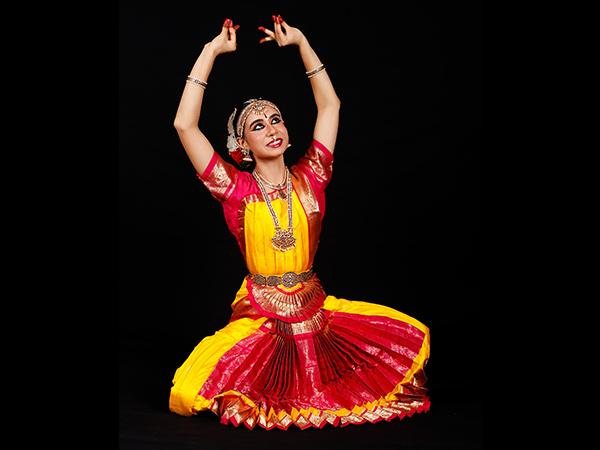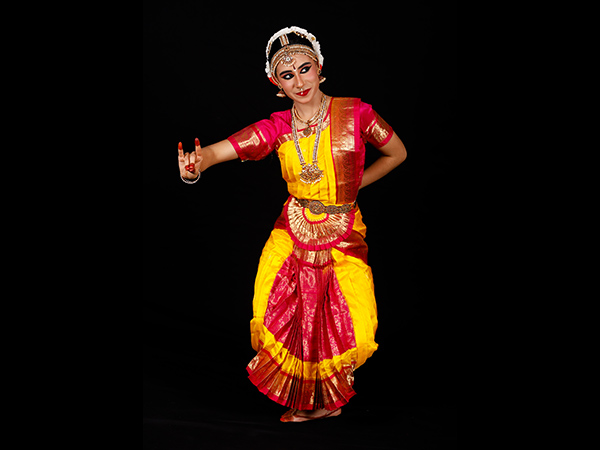Varnam - "Kanna"
- Raagam: Raagamaalika
- Taalam: Aadi
- Composer: Smt.Lalitha (Saraswathi Gana Nilayam)
Varnam stands as the most enthralling, interesting, and challenging piece in a Bharathanatyam recital.
It serves as the piece de resistance, showcasing the dancer's expertise. Achieving perfect synchronization
of Bhava, Raaga, and Taala, it provides abundant scope for the dancer to display rhythmic talents alongside
rich and varied abhinaya. Additionally, it serves as a measure of one of the 'Dashapraanas'
(the 10 vital characteristics of a good dancer), namely 'ashrama' (endurance), as it is the longest
and most demanding item. Here, the dancer employs footwork to dance the Adavu-Jatis, hands and hastaas to
convey the song's meaning, and subtle facial expressions for the inner emotion portrayed through saatvika abhinaya.
Varnam is the most elaborate, beautiful, and significant piece in Bharathanatyam, encompassing aspects of NRITTA, NRITYA, and BHAVA, interwoven with complex rhythmic patterns and rich melodies. In this piece, the dancer extols the glory of Lord Krishna, depicting him as her charming playmate. The first half illustrates his youthful adventures by the banks of the Yamuna, praising his exploits such as defeating Kalinga, displaying the universe to his mother, and captivating the gopis in rasleela. Enthralled by Krishna, the dancer summons his presence, marveling at how the peacock feather adorning his head seems to dance in rhythm with his movements.
The second half shifts focus to Krishna's prowess as a king, warrior, and husband, with the dancer praising his multifaceted skills. This item serves as a true testament to the dancer's prowess, challenging her on all levels. Please feel free to applaud whenever you are moved to do so.
This Varnam is set to Raagam Raagamaalika and Aadi Taalam, composed by Smt. Lalitha of Saraswathi Gana Nilayam, who is Sukanya's teacher's Guru herself. Within the Shishya school, this Varnam is a cherished legacy handed down from teacher to student.
In fact, Guru Sukanya herself performed this Varnam during her Arangetram.
Read more
 1:30 PM EST
1:30 PM EST
 2:00 PM to 4:00 PM
2:00 PM to 4:00 PM
 4:00 PM to 4:30 PM - Intermission
4:00 PM to 4:30 PM - Intermission
 4:30 PM to 7:00 PM
4:30 PM to 7:00 PM
 7:00 PM
7:00 PM










